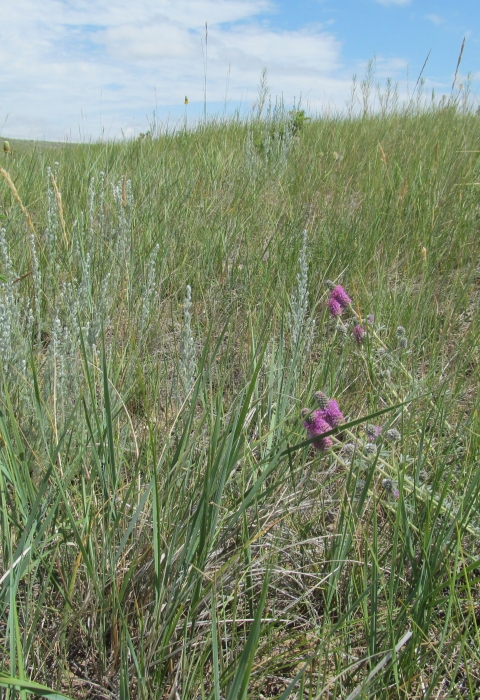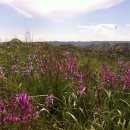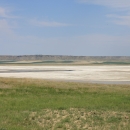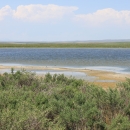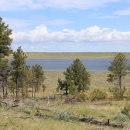About Us
Lake Mason National Wildlife Refuge consists of three separate tracts of land: Lake Mason Unit, Willow Creek Unit, and North Unit.
Vegetation for all units consists mainly of mixed-grass prairie (western wheatgrass, bluebunch wheatgrass, needle and thread, and prairie junegrass) with sagebrush sagebrush
The western United States’ sagebrush country encompasses over 175 million acres of public and private lands. The sagebrush landscape provides many benefits to our rural economies and communities, and it serves as crucial habitat for a diversity of wildlife, including the iconic greater sage-grouse and over 350 other species.
Learn more about sagebrush scattered across the refuge. Wetlands associated with the units are frequently dry, but are very productive for waterfowl and shorebirds when they have water. The Refuge is an important staging and nesting area for migrating waterfowl, shorebirds, and other migratory birds. It provides habitat for resident game species including pronghorn, elk, mule deer, greater sage grouse, sharp-tailed grouse, and gray partridge. A black-tailed prairie dog colony provides habitat for mountain plovers and burrowing owls.
With the exception of the north half of the Lake Mason Unit, the Refuge is open to hunting of migratory game birds, upland game birds, and big game as well as hiking and wildlife observation. The north half of the Lake Mason Unit is closed to all public access to increase the security and attractiveness of this area to migratory birds.
Lake Mason National Wildlife Refuge is one of four satellite national wildlife refuges in central Montana that are part of the Charles M. Russell Complex. Satellite refuges are unstaffed national wildlife refuges. Lake Mason National Wildlife Refuge is managed by staff of Charles M. Russell National Wildlife Refuge in Lewistown, Montana.
Our Mission
The mission of the National Wildlife Refuge System is to administer a national network of lands and waters for the conservation, management and, where appropriate, restoration of the fish, wildlife and plant resources and their habitats within the United States for the benefit of present and future generations of Americans.
Our History
President Franklin D. Roosevelt signed Executive Order 8770 on June 3, 1941 that established Lake Mason Refuge “as a refuge and breeding ground for migratory birds and other wildlife”. At establishment, this Refuge was managed as a flowage and refuge easement. The Service acquired fee title lands within this refuge through a transfer authorized by the Bankhead-Jones Farm Tenant Act. The Bankhead-Jones Farm Tenant Act authorized the federal government to acquire damaged lands (lands homesteaded and later abandoned), rehabilitate these lands, and use them for various purposes. Executive Order 10787 (November 6, 1958) and Secretary’s Order 2843 (November 17, 1959) transferred jurisdiction of selected lands from the Secretary of Agriculture to the Secretary of Interior. It directed that these lands be “for use and administration under applicable laws as refuges for migratory birds and other wildlife.” These lands were received in scattered parcels of various sizes and provided a land base for this refuge and had been previously grazed or farmed.
Other Facilities in this Complex
This refuge is managed as part of the Charles M. Russell Complex. A National Wildlife Refuge Complex is an administrative grouping of two or more refuges, wildlife management areas or other refuge conservation areas that are primarily managed from a central office location. Refuges are grouped into a complex structure structure
Something temporarily or permanently constructed, built, or placed; and constructed of natural or manufactured parts including, but not limited to, a building, shed, cabin, porch, bridge, walkway, stair steps, sign, landing, platform, dock, rack, fence, telecommunication device, antennae, fish cleaning table, satellite dish/mount, or well head.
Learn more about structure because they occur in a similar ecological region, such as a watershed or specific habitat type, and have a related purpose and management needs. Typically, a project leader or complex manager oversees the general management of all refuges within the complex and refuge managers are responsible for operations at specific refuges. Supporting staff, composed of administrative, law enforcement, refuge manager, biological, fire, visitor services, and maintenance professionals, are centrally located and support all refuges within the complex.
